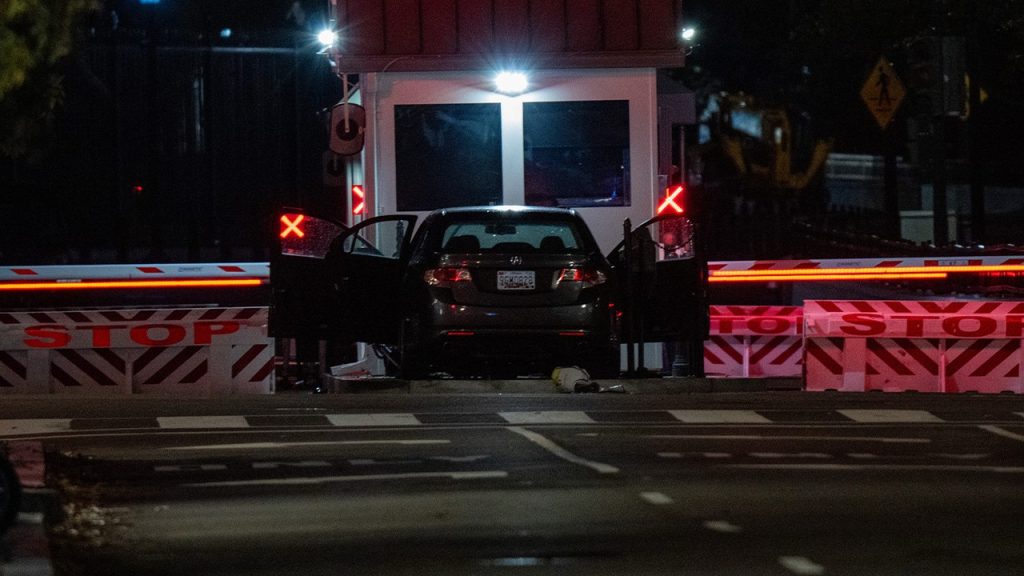White House Incident: Suspect Arrested After Vehicle Rams Barricade
In the quiet hours of Tuesday night, a security incident unfolded at one of America’s most iconic symbols of democracy. At approximately 10:37 p.m. on October 21, an individual drove their vehicle directly into a Secret Service barricade located at the intersection of 17th and E Street in Northwest Washington, DC, just outside the White House complex. The unexpected crash immediately triggered the well-rehearsed security protocols that protect the presidential residence around the clock, demonstrating the vigilance maintained at this high-profile location regardless of the hour.
The response from law enforcement was swift and decisive, showcasing the preparedness that has become increasingly necessary in today’s security environment. United States Secret Service Uniformed Division officers immediately apprehended the individual behind the wheel, preventing any potential escalation of the situation. While details about the suspect’s identity and possible motives remain undisclosed pending the conclusion of a thorough investigation, the immediate containment of the threat highlighted the effectiveness of the security measures in place. Following the arrest, both Secret Service personnel and officers from the Metropolitan Police Department conducted a comprehensive assessment of the vehicle to ensure it posed no additional danger to the public or government facilities.
The incident occurred against a backdrop of ongoing discussions about White House security and renovations. In recent weeks, former President Donald Trump has publicly celebrated demolition work at the White House related to the construction of a new ballroom, describing the sound of the construction as “music to my ears.” This comment reflects the former president’s continued interest in leaving a permanent mark on the historic building, even after his term ended. The ballroom project has become something of a political flashpoint, with critics questioning the appropriateness of such modifications to the historic residence.
Further highlighting the political dimensions surrounding even physical changes to the White House, former Secretary of State and presidential candidate Hillary Clinton has reportedly been rallying voters against Trump’s ballroom construction plans, pointedly remarking that it’s “not his house.” This commentary underscores how the White House serves not only as the residence of the sitting president but also as a powerful symbol in American political discourse. Even architectural changes to the building can become contested terrain in the broader landscape of partisan politics, reflecting deeper disagreements about presidential legacy and the stewardship of national institutions.
As the investigation into Tuesday night’s barricade incident continues, it joins a concerning history of security challenges at the White House perimeter. Over the years, the Secret Service has faced various attempts by individuals trying to breach White House security, from fence jumpers to unauthorized drones. Each incident has prompted reviews of security protocols and often led to enhanced measures, such as the taller, more robust fence that now surrounds the complex. The constant balance between maintaining an open, accessible symbol of democracy and ensuring the absolute security of the presidential residence remains an ongoing challenge for those tasked with protecting the White House.
DC Fire and Emergency Medical Services confirmed their assistance with the Secret Service during the investigation, though their involvement appears to have been precautionary rather than necessary for any serious injuries or threats. As the scene was cleared and normal operations resumed around the White House complex, the incident serves as a reminder of the constant vigilance required to protect America’s centers of government. While this particular event was resolved quickly without apparent injuries or broader threats to public safety, it reinforces why security remains paramount at sites of national significance, especially in an era when political tensions and security concerns continue to intersect at prominent government buildings across the nation.


